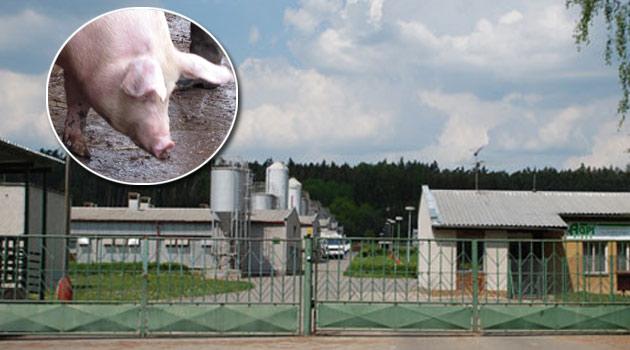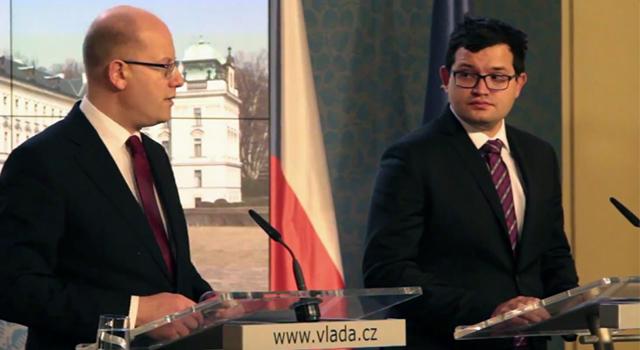Czech Human Rights Minister says Government might decide to buy pig farm on Romani genocide site in June

The Czech Government could officially adopt a solution in the matter of buying the pig farm at Lety u Písku that currently stands on the location of the Protectorate-era concentration camp for Romani people as soon as June. Speaking during a discussion on the Prima television channel yesterday, Czech Minister for Human Rights and Legislation Jan Chvojka (Czech Social Democratic Party – ČSSD) mentioned the possible timing of the purchase.
The minister said he believes the Government will manage to resolve the matter by the end of its term. He reiterated that this month an expert appraisal should be ready establishing the value of the buildings, land and technology at the site.
“The appraisal is not yet ready, I anticipate I will receive it any day now, it is meant to be delivered by 20 April. Once we know the value of the real estate, we will negotiate the price during May with the company [AGPI, the operator of the pig farm] and during June it is possible that an agreement will be reached, that we will settle with that company and the question will be resolved,” Chvojka said.
The Human Rights Minister said he believes the current Government is now the closest it has ever been to completing the negotiations, purchasing the farm, and removing it from the memorial site. According to the chair of the TOP 09 and Mayors club in the lower house of Parliament, Michal Kučera, the Government promised to address the issue at the beginning of its term and has done nothing about it for roughy three years now.
Kučera did said, however, that he believes the cabinet will find a solution by the end of its term. Romani organizations have been demanding that the farm be closed.
For quite some time the closure of the pig farm now at the location of what was once a concentration camp for Romani people has been advocated primarily by the Committee for the Redress of the Roma Holocaust (VPORH) and its chair, Čeněk Růžička. The European Parliament and other international organizations have also called on the Czech Republic more than once to remove the farm from what should be a place of reverence.
The administration of Czech Prime Minister Jiří Paroubek (ČSSD) was the first to begin addressing the problem more intensively. His Government held negotiations on buying the farm as well.
The cabinet of Czech Prime Minister Mirek Topolánek (Civic Democratic Party – ODS) also planned to move the farm but ultimately did not. A price for the property has never been publicly disclosed.
From the history of the concentration camp at Lety by Písek
In 1940, the area on which the concentration camp would arise at Lety u Písku was being used to house local construction workers. A disciplinary labor camp was then established there at the order of the Interior Minister of the Government of the Protectorate of Bohemia and Moravia, Josef Ježek, on 15 July 1940.
That order was issued on the basis of Government Decree No. 72, on disciplinary labor camps, dated 2 March 1939. That particular decree was issued prior to the Nazi occupation of Czechoslovakia on 15 March 1939.
According to the 2 March 1939 decree, the disciplinary labor camp was to concentrate “wandering gypsies and other vagabonds living that same way, beggars by trade and persons living from the begging of others (children, etc.), gamblers by trade, notorious idlers, loafers, and persons living from dishonest income (prostitution, etc.), whether their own or that of others, who are capable of work.” The first 12 prisoners arrived there on 17 July 1940.
On 1 August 1942 the camp was transformed into a “Gypsy camp” and entire Romani families were transported there. That was the day it began functioning as a concentration camp until its closure on 4 May 1943.
The capacity of the camp at Lety had been increased to 600 prisoners, but that number was soon exceeded, as during August 1942 there were more than 1 100 children, men and women interned there. The camp was not equipped with the necessary hygienic and other facilities for such a large number of persons.
Prisoners frequently had to bathe in a nearby fishpond. Between 1940 and August 1942, only men had been imprisoned at Lety.
From August 1942 onward, Romani children and women also rotted away there in absolutely unsatisfactory conditions. After a big onrush of inmates during August 1942, the next arrivals there were mostly either isolated individuals or single families.
A total of 326 persons perished in the camp at Lety, 241 of them children. A total of 120 victims were buried in a temporary mass grave near the camp, while others were buried en masse at the cemetery in nearby Mirovice.
After being transported to Auschwitz, 540 prisoners originally from Lety died there. There were two sets of mass transports from Lety to Auschwitz.
The first such mass transport happemed on 3 December 1942 when 16 men and 78 women labeled “asocials” were sent to the Auschwitz I concentration camp. The second transport of 417 prisoners to the Auschwitz II-Birkenau concentration camp meant the practical liquidation of the Lety camp.
While the first transport from Lety to Auschwitz had been implemented on the basis of a decree about crime prevention, the second transport was realized on the basis of Reichsführer Himmler’s decree from 16 December 1942, which ordered the transport of all Romani people to the Auschwitz concentration camp. The remaining 198 prisoners at Lety were relocated to the “Gypsy camp” at Hodonín u Kunštátu (the so-called Žalov site) or to reception camps in Pardubice and Prague.
On 13 May 1995, at the site of the mass grave near the former camp, a memorial was unveiled reading “To the victims of the gypsy camp at Lety 1942-1943. Never forget. Ma bisteren.” On 13 May 2010 the Lety Cultural Monument was officially announced and opened there and is administered by the Lidice Memorial on the basis of a Czech Government decision.
